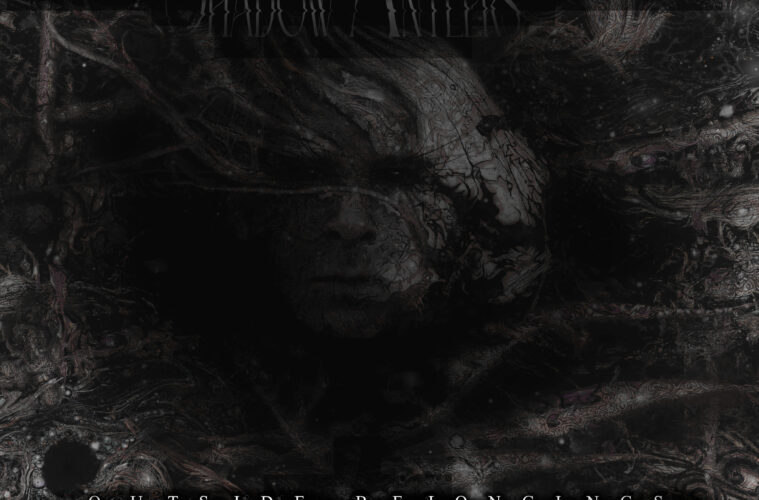Outside Belongings by Shadow Antlers presents itself as a dark wave and downtempo statement rooted in raw electronic textures, outsider poetics, and a visceral connection to untamed inner landscapes. Shadow Antlers is the project of Jakob, also active in the Swedish noise rock and post-punk formation RAMN, and this body of work navigates a charged sonic territory where rhythm, synth, and atmosphere converge into a dramatic, unfiltered narrative. The album emerges as a personal exploration of identity, escape, and non-normative belonging, shaped during a period marked by emotional and psychological tension, and the music carries the imprint of that lived intensity.
The rhythmic structure across Outside Belongings is central to its immersive impact. The beats oscillate between pummeling and restrained, evoking both EBM-inspired propulsion and the shadowy pulse of mid-80s post-industrial atmospheres. The grooves never fall into repetition for its own sake; instead, they work as ritualistic patterns that reinforce themes of disappearance, flight, and self-transformation. The downtempo foundation does not result in softness but rather in an underground gravitational pull, as if each track walks a secret passage beneath conventional soundscapes. The rhythmic arrangements often feel on the verge of collapse, creating a sensation of machines decaying or mechanical walls cracking, perfectly aligned with the record’s thematic language of destruction, departure, and liberation.
Synthesis design stands as another defining pillar. Jakob draws upon reference points such as The Cure’s Trilogy, DAF, Skinny Puppy, Siouxsie, Minimal Compact, Wire, and Clan of Xymox’s Medusa, using them not as stylistic molds but as energetic triggers. The synth layers are built like emotional cartography: soaring arpeggios that suggest transcendence, distorted textures that resemble broken circuitry, and haunting pads that create a dreamlike, feral ambience. Each electronic layer feels hand-carved rather than digitally polished, embodying a sound world that leans toward primal intuition over retro homage. The production choices give the synth work a corporeal and tactile presence, making it feel alive, breathing, and occasionally threatening.
The atmosphere generated across the album forms the conceptual core of the listening experience. Outside Belongings does not solely describe a mood but constructs an alternate psychic landscape: one where identity becomes porous, cities crumble, and wilderness becomes both refuge and rebirth. The overarching tone evokes feral goth, avant-darkwave, and electronic infra-punk sensibilities, forging a space where outsider energy is not a stylistic tag but a philosophical stance. There is an omnipresent tension between visibility and invisibility, as if the record were transmitting from a hidden community that exists parallel to mainstream society, connected through unspoken codes and intangible rituals. This aligns with the narrative Jakob reveals regarding his creative process: after confronting medical attempts to normalize his emotional spectrum, he redirected that liminal condition into music, amplifying themes of non-conformity, wildness, and the dissolution of prescribed selfhood.
The vocal delivery intensifies this atmosphere. Described as “scraping against your skeleton,” the voice functions less as performance and more as channeling. It evokes a sense of confession whispered through metallic echoes, reinforcing the idea that these tracks originate from an internal world that refuses to align with external expectations. Combined with shimmering guitars and enveloping low-end patterns, the album achieves a sonic paradox: dark yet energizing, melancholic yet forward-moving, grounded yet constantly slipping into uncharted emotional territory.
Outside Belongings closes with a resonance that extends beyond its final notes, strengthened by the intellectual and artistic dedication involved. Jakob’s self-sufficiency in writing, programming, playing, producing, and designing the visual components results in a unified artistic statement. The album title, inspired by Elspeth Probyn, situates the work within broader reflections on alternative identity structures beyond normative boundaries, echoing the record’s sonic core.
This release arrives as a highly refined contribution to dark electronic music, unafraid of its own intensity and deeply committed to authenticity, individuality, and exploration.

